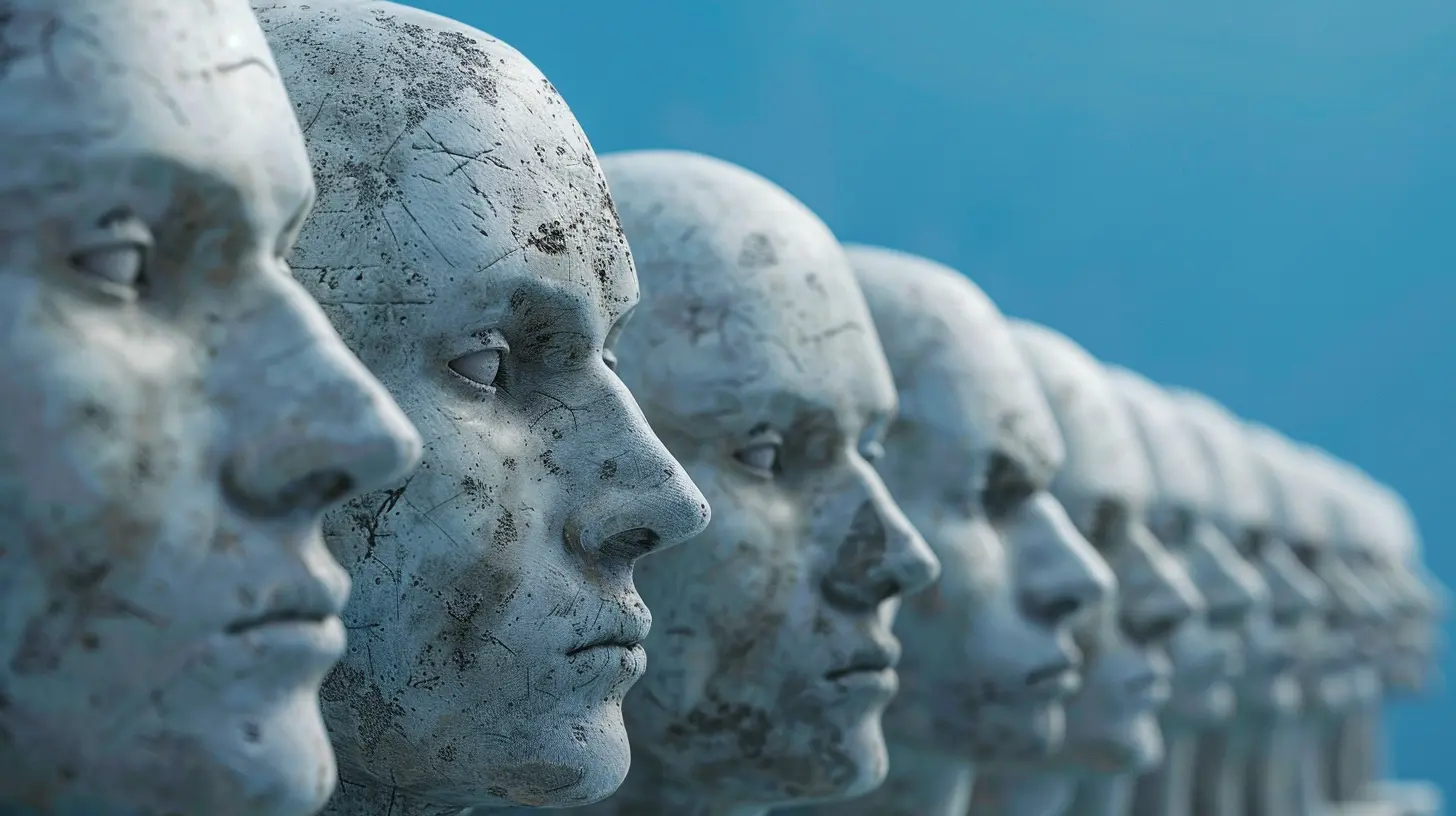How Attribution Theory Explains Our Judgments of Others
25 July 2025
Have you ever wondered why we tend to make snap judgments about other people? You catch yourself thinking, "That person is lazy," or "She’s so rude." But how do we reach these conclusions so quickly, often without knowing the full story?
Well, it turns out there’s a psychological concept called Attribution Theory that helps explain this. Attribution Theory digs into how we interpret behaviors—both our own and those of others. Whether it's a friend being late to dinner or a stranger cutting you off in traffic, our brains are constantly working to figure out why people do what they do. But here’s the kicker: we’re not always accurate.
In this article, we’ll dive deep into Attribution Theory, explore the types of attributions we make, and take a look at how this theory shapes our judgments of others (sometimes unfairly). And don’t worry, we’ll keep it light and conversational—no PhD in psychology required!
What Is Attribution Theory?
Attribution Theory was first introduced by Fritz Heider, a psychologist who was fascinated by how people explain behaviors—whether it's our own actions or those of others. Simply put, Attribution Theory is the process of assigning causes to behaviors and events.Imagine you’re watching a football game, and your favorite player misses an easy goal. What’s your immediate thought? Do you think, "He’s just having a bad day" (a situational or external factor), or do you think, "He’s just not that good" (a personal or internal factor)? That’s attribution in action! We’re constantly trying to pinpoint the "why" behind what happens around us.
Internal vs. External Attributions
At the core of Attribution Theory are two types of attributions:1. Internal Attributions (also known as Dispositional Attributions): We attribute someone’s behavior to their internal characteristics, like their personality, abilities, or mood. For example, if someone cuts you off in traffic, you might think, "They’re just an aggressive driver."
2. External Attributions (also known as Situational Attributions): We attribute behavior to external factors, like the environment or circumstances. If someone is late to a meeting, you might assume, "There must have been heavy traffic" rather than blaming their punctuality.
What’s interesting is how quickly we make these attributions—often without even realizing it. And depending on whether we make an internal or external attribution, our judgments of others can vary drastically.
The Fundamental Attribution Error: Why We Often Get It Wrong
Here’s where things get tricky. While Attribution Theory provides a useful framework for understanding human behavior, our brains are not perfect. We’re prone to making mistakes, and one of the most common errors we make is known as the Fundamental Attribution Error.What Is the Fundamental Attribution Error?
The Fundamental Attribution Error is our tendency to overestimate the role of internal factors and underestimate the influence of external factors when judging others’ behavior. In other words, when someone else messes up, we’re quick to blame their personality or character rather than considering the context.Think about it: If a co-worker misses an important deadline, you might think, "They’re so lazy" or "They don’t care about their job." But what if they had a family emergency, or their computer crashed? These situational factors may explain their behavior, but we tend to overlook them.
However, when it comes to our own behavior, we often do the opposite. This is called the Actor-Observer Bias. We’re more likely to attribute our own mistakes to external factors. "I was late to the meeting because traffic was terrible," not because "I’m bad at managing my time."
Why Do We Do This?
So, why are we so quick to judge others harshly but give ourselves a break? One theory suggests that it’s easier. Human brains are like efficiency machines—we love shortcuts. It’s simpler to assume someone’s behavior is due to who they are rather than taking the time to consider all the nuances of their situation. After all, we don’t always have access to the full story behind someone’s actions.
The Self-Serving Bias: Protecting Our Ego
Let’s dig a little deeper into how we explain our own behavior, especially when things go wrong. Enter the Self-Serving Bias. This is our tendency to take credit for our successes and blame external factors for our failures.For example, if you ace a test, you’re likely to think, "I’m really smart, I studied hard." But if you fail? "That test was unfair," or "I didn’t have enough time to prepare."
The Self-Serving Bias acts as a shield for our ego. It helps us maintain a positive self-image, even when things don’t go as planned. But it can also prevent us from taking accountability for our mistakes.
The Role of Culture in Attribution
Attribution isn’t a one-size-fits-all concept. Culture plays a huge role in how we make attributions. For instance, people from Western, individualistic cultures (like the U.S. or the U.K.) are more likely to make internal attributions—emphasizing personal responsibility and individual traits. Meanwhile, people from Eastern, collectivist cultures (like Japan or China) tend to focus more on external attributions, acknowledging the influence of social and environmental factors.This cultural difference is fascinating because it highlights how our environment and upbringing shape the way we perceive the world. What seems "normal" to one person might be completely different for someone from another culture.
Why Understanding Attribution Theory Matters
So, why should you care about Attribution Theory? Well, aside from it being an interesting psychological concept, it has real-world implications that affect how we view and interact with others.1. Improving Relationships
Have you ever had a misunderstanding with a friend or partner because you assumed their behavior was due to who they are, rather than what was going on in their life? By being aware of Attribution Theory, we can become more empathetic. Instead of jumping to conclusions, we can pause and consider that someone’s actions might be influenced by external factors. This simple shift in thinking can make a huge difference in our relationships.2. Reducing Conflict
When we make quick, internal attributions about others, we’re more likely to get frustrated or angry. But if we take a moment to consider external factors, it can reduce conflict. For example, instead of getting mad at a slow cashier, we might think, "Maybe they’re new or understaffed today." This understanding can help us approach situations with more patience and kindness.3. Becoming More Self-Aware
Attribution Theory isn’t just about judging others—it’s also about understanding ourselves. By recognizing the Self-Serving Bias, we can hold ourselves more accountable and avoid shifting blame when things go wrong. This self-awareness helps us grow and improve, both personally and professionally.How to Avoid the Pitfalls of Attribution
Now that we know how easily we can fall into the trap of attribution errors, what can we do about it? Here are a few tips to keep in mind:1. Pause Before You Judge
When someone’s behavior rubs you the wrong way, take a moment to ask yourself: "Could there be an external reason for this?" By shifting your focus to situational factors, you might find a more compassionate explanation.2. Consider the Context
Instead of jumping to internal attributions (like blaming someone’s personality), try to gather more information. What’s going on in their life? Could something else be contributing to their behavior?3. Apply the Same Standards to Yourself and Others
We often give ourselves the benefit of the doubt while holding others to a higher standard. Try to apply the same level of understanding to others as you do to yourself. If you’re willing to blame traffic for your own lateness, be willing to do the same for someone else.4. Embrace Humility
Recognize that you don’t always have the full picture. Sometimes, we just don’t know why people do what they do. Instead of assuming the worst, embrace a mindset of humility and curiosity.Final Thoughts
Attribution Theory offers us a lens through which we can better understand both ourselves and those around us. It explains why we’re quick to judge, why we sometimes get it wrong, and how our perceptions are shaped by both internal and external factors.By becoming more aware of our attribution tendencies, we can improve our relationships, reduce unnecessary conflict, and foster a more compassionate and understanding outlook on life. So next time you find yourself making a snap judgment about someone, remember: there’s often more to the story than meets the eye.
all images in this post were generated using AI tools
Category:
Social PsychologyAuthor:

Jenna Richardson
Discussion
rate this article
1 comments
Zevan McClintock
This article effectively highlights how Attribution Theory influences our perceptions, emphasizing the role of internal and external factors in shaping judgments about others' behavior and motivations. Thought-provoking insights!
August 16, 2025 at 4:45 AM

Jenna Richardson
Thank you for your thoughtful feedback! I'm glad you found the insights on Attribution Theory impactful.


